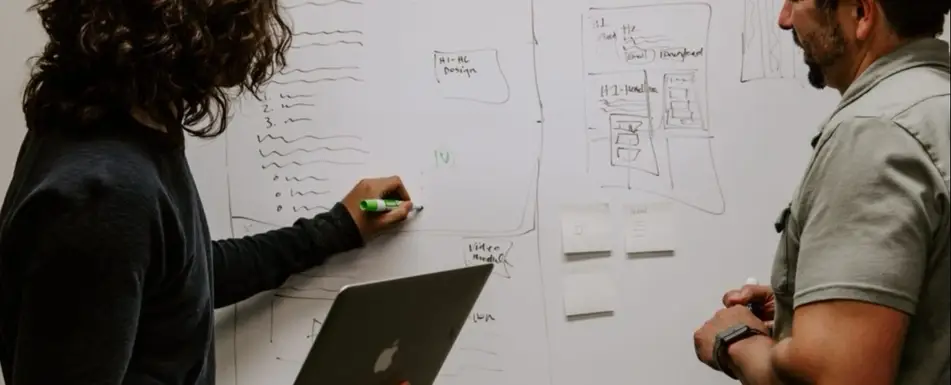
Many people are well aware that not all problems have simple, obvious solutions. This holds true in relationships, at work, and certainly when it comes to complex societal challenges like climate change, mass incarceration, and poverty. Unless you assess and tackle problems in a holistic way, the payoff may be short lived or even create unintended consequences.
But if you’re just a single person taking on a challenge, your viewpoint is inevitably limited—no matter how brilliant you may be. You need input from other people in order to broaden your perspective of the problem at hand. Understanding and embracing this is foundational to becoming what’s called a “systems leader.”
There are plenty of resources written for aspiring systems leaders, but it’s a lot to wade through. This piece is a quick summary of the material out there, designed to introduce the concept, explain what makes systems leaders are so impactful, and offer tips for how to become one.
What is a systems leader?
The central idea is that systems leaders don’t just examine one facet of a problem. Instead, they look at the entire context contributing to that problem by connecting people with different knowledge and viewpoints in order to understand the full, complex picture. In this way, systems leaders pave the way for holistic solutions that target root causes.
What does a systems leader do, exactly?
Systems leaders share three core capabilities: they can see the larger system contributing to a problem, foster conversations that generate new ways of looking at a situation, and move people toward collective problem solving and co-creation.
Let’s look at each more closely:
1. Seeing the larger system
We won’t take a deep dive into the ins and outs of systems thinking here, but in the simplest possible terms: systems leaders put issues into their full context. Instead of breaking down a problem into different parts and examining each individually, systems leaders look at the complex, interconnected forces at play.
Peter Senge—systems scientist and lead author of The Fifth Discipline, a book on systems thinking in organizations—suggests systems thinking encompasses an ability to see the connections in any situation, the consequences of your actions, and how situations unfold over time.
Let’s look at an example: in the 1930s, wolves were eliminated from Yellowstone as part of efforts to alleviate predation on elk. Sure enough, the elk population flourished—so much so that they overconsumed plant species that were vital to beaver habitats, and in turn, beaver populations dwindled. The people who designed this plan looked at predator-prey relationships without accounting for how plant and animal species in the park were interconnected.
In contrast, by applying systems thinking, you can begin to uncover and understand “invisible forces” that interact to create the problems you’re seeing.
It takes time to learn about systems thinking, but it’s well worth the effort. The books Thinking in Systems: A Primer and Introduction to Systems Thinking as well as this brief overview are a great place to start. For something less abstract, you can read case studies from The Nature Conservancy to see systems thinking in action.
2. Fostering “generative” conversations
Systems leaders want groups to discover new ways of looking at a problem. They do this by helping individuals to uncover and challenge their ingrained beliefs and assumptions about themselves and the world around them, be it other people, issues, or institutions.
According to The Fifth Discipline, this involves a three-part process in which group members reflect in order to become aware of their beliefs and assumptions, advocate by explaining their thinking and reasoning, and inquire to find out what other people are thinking.
These processes are foundational to using the Ladder of Inference, a model that explains how people draw conclusions and make decisions, which you can use to help you to break down and better understand your own thought processes as well as other people’s. Familiarizing yourself with the Ladder of Inference is a good starting point for cultivating generative conversations.
3. Moving toward collective problem solving and co-creation
Systems leaders work with groups to imagine desirable future scenarios and take steps toward building them—even when success feels out of reach. It’s a gradual process, in which systems leaders help people to describe their aspirations and then build confidence that they’re achievable. The key here is that the group experiences a series of collective accomplishments that connect aspirations with actions.
In The Fifth Discipline, executive leadership consultant Charlotte Roberts suggests putting this into practice by asking an “if-then” question like: “If we did hold a better model of our customers, how would we behave?” Then, by implementing those new behaviors, the group can begin to see whether or not that vision feels more realistic.
What should I do next?
Most people aren’t in a position to launch immediately into solving a major societal problem by applying these concepts—but they may come in handy when the moment presents itself. You can start simple, by applying these concepts to solve problems that surface at your office, such as chronically late-starting meetings or consistently missed deadlines. There are many ways to have an impact.
You can also start small by sharing what you’re learning and seeing if it catches on with colleagues. Systems thinking psychologists acknowledge that "being the sole systems thinker in a linear thinking organization can be a lonely place.” But you don’t need to let that deter you. You can get others on board with the idea, sharing resources and articles that spark discussion.
Did you enjoy this post? There's plenty more where this came from! Subscribe here for updates.
by Jen Bogle

